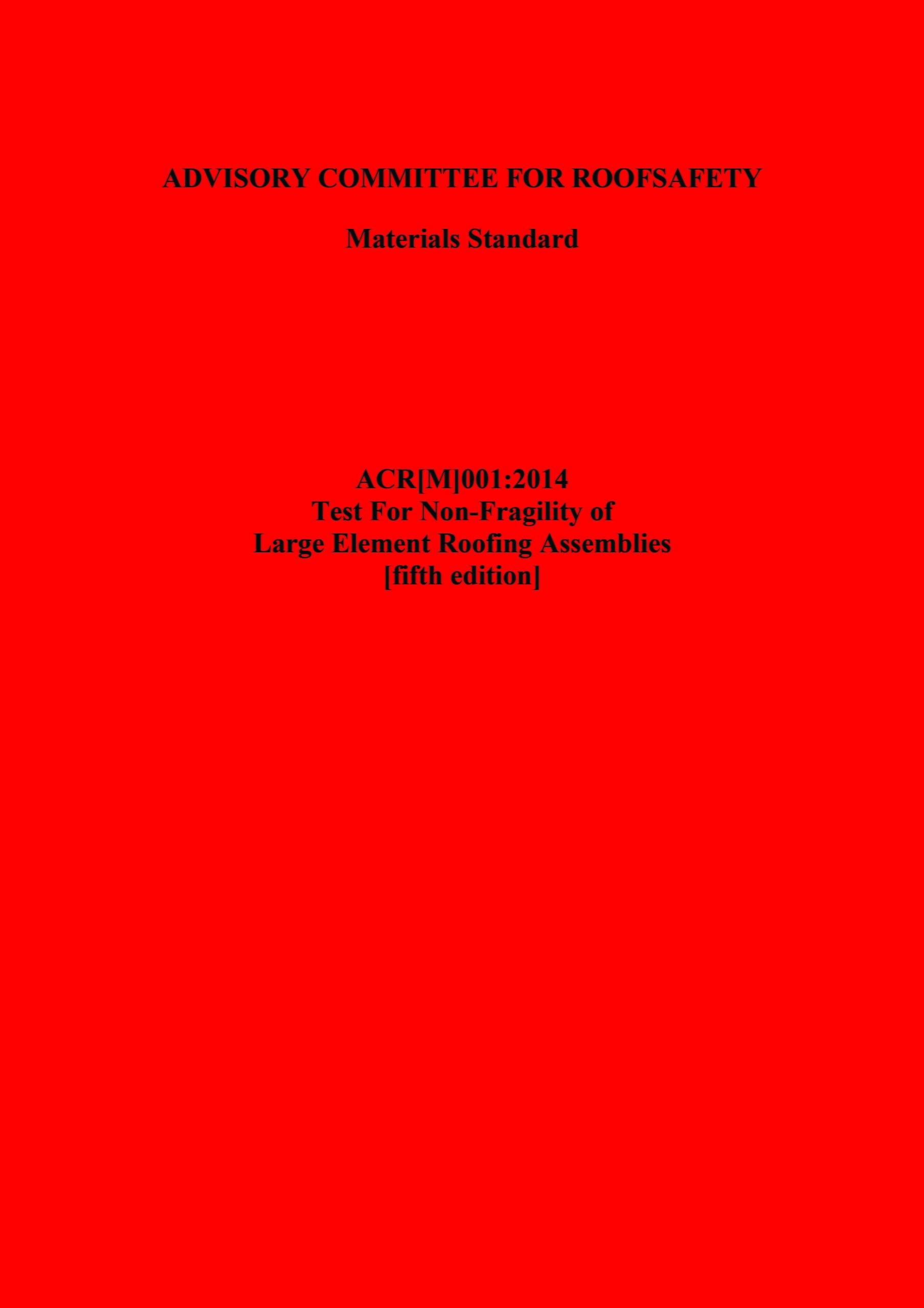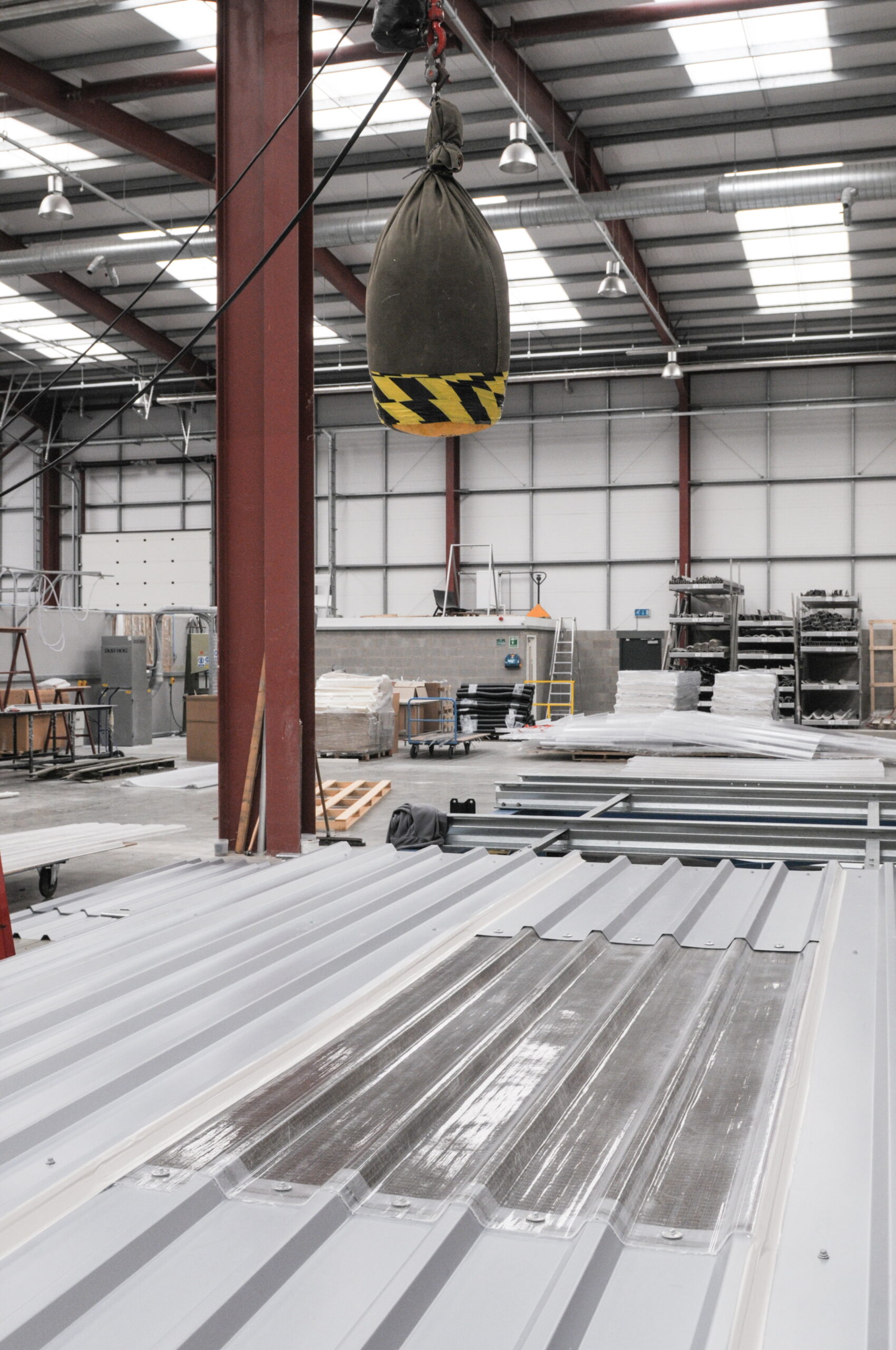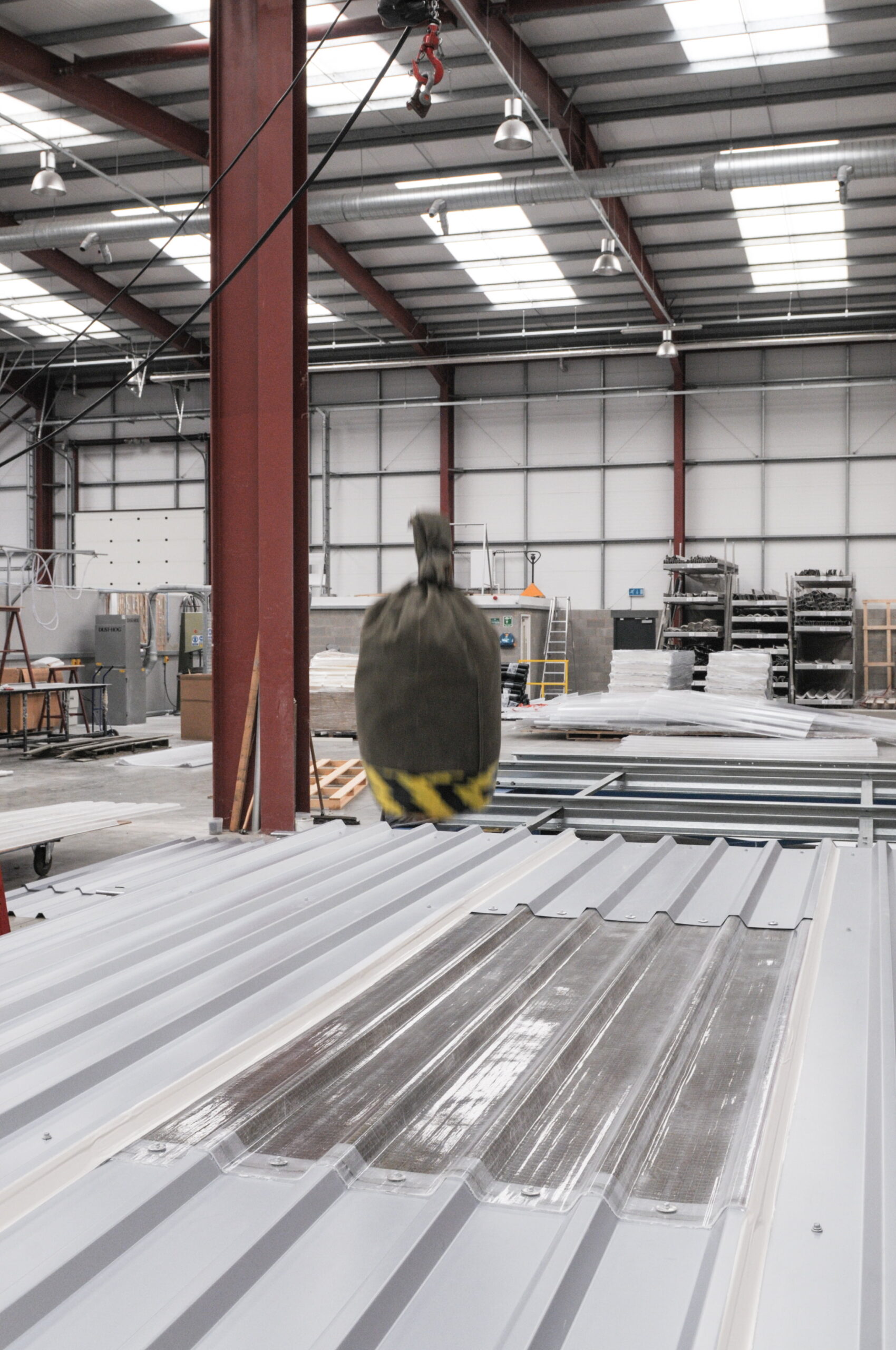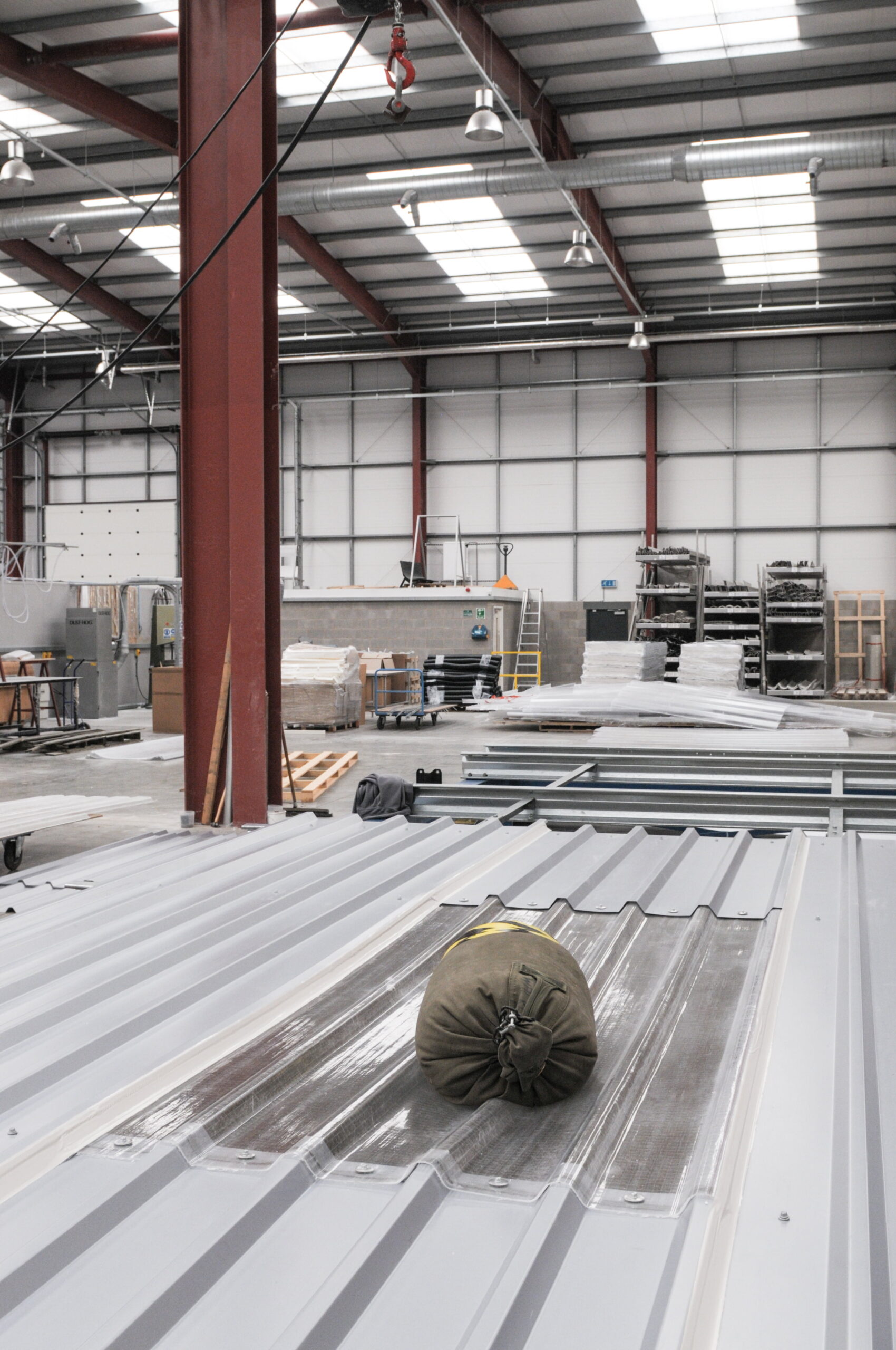Before the publication of the first edition of ACR[M]001 by the Advisory Committee for Roof Safety in 2000, there was no clear guidance of how manufacturers and installers of systems could demonstrate that the requirements for non-fragility of roofs were being met…
Now ACR[M]001:2014 Test for Non-Fragility of Large Element Roofing Assemblies [fifth edition], often referred to as the ‘Red Book’, prescribes how a representative roof assembly should be tested to demonstrate its ability to resist the impact of a person falling onto it, and then supporting their weight.
According to the ACR document, an assembly can be classed as either fragile or non-fragile. The test covers all components including all of the fasteners, sealant tapes etc – that are required to be representative of the finished installation.
The application of the test and classification for in-plane rooflights is further described and defined in The Rooflight Association (RA) Technical Document NTD03.

The Test Procedure
The test should be carried out by a competent person. It involves an ‘impactor’ comprising a 300mm diameter cotton weave sandbag filled with 45kg of soft sand, being dropped from a height of 1.2 metres onto the roofing assembly.
The test sample is built on a standard roof rig representing a typical metal roof structure one metre high from the ground.
The impactor should be dropped in specific worst-case scenario zones, depending upon the assembly, where are generally:
- Within 150mm of the centre of the sample.
- Within 300mm of a support point.
- Within 150mm of the assembly edge, adjacent to the underlap with the next sheet.
- Where ever the competent person deems the worst-case scenario to be.




